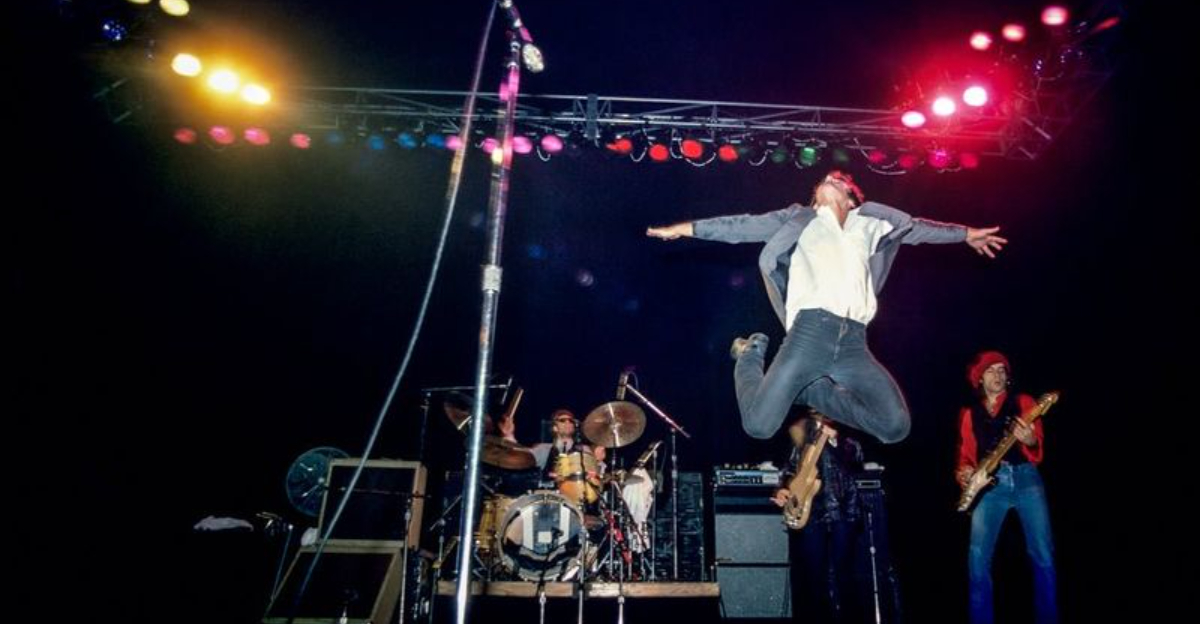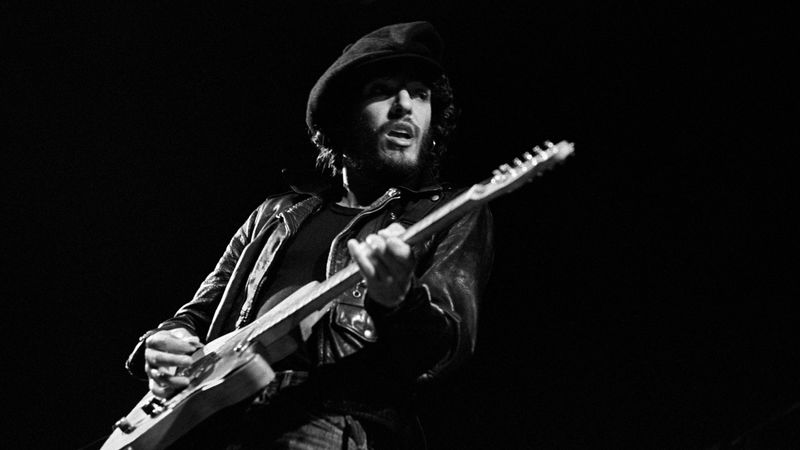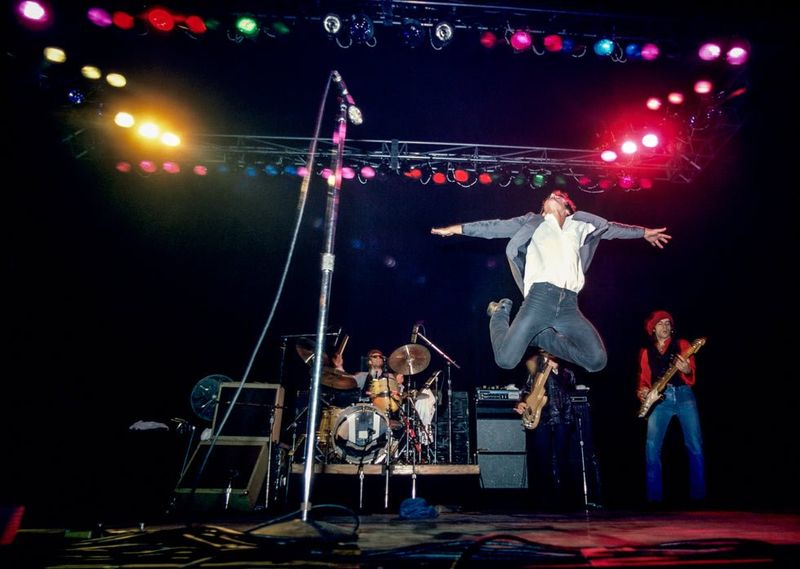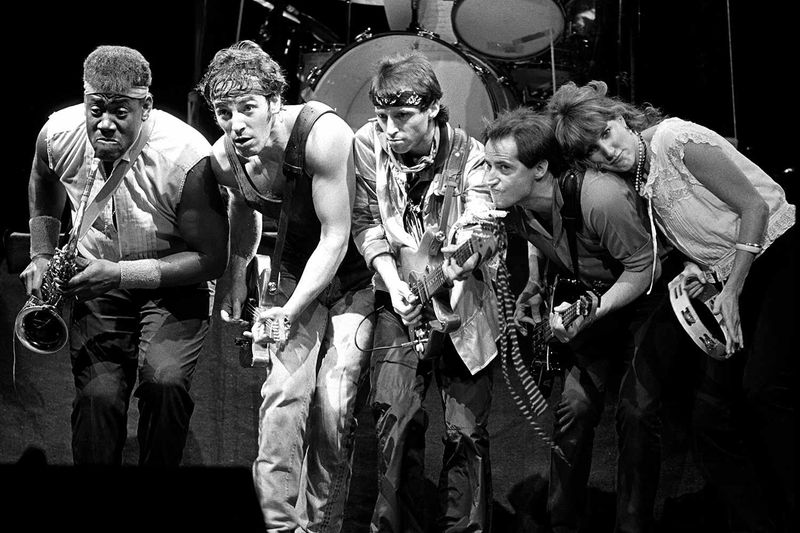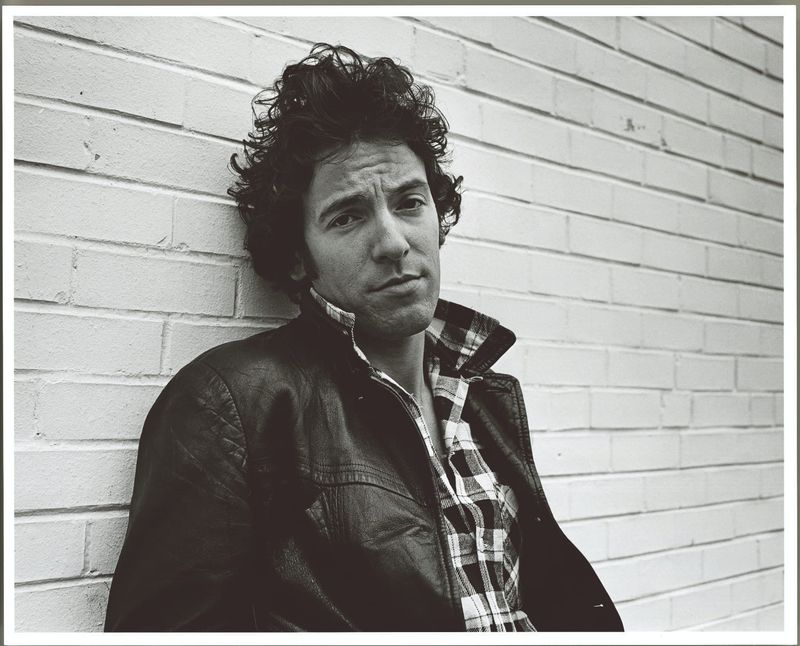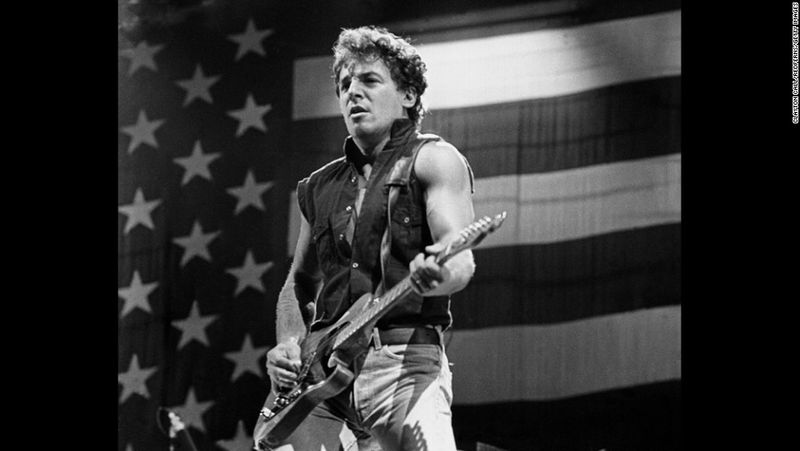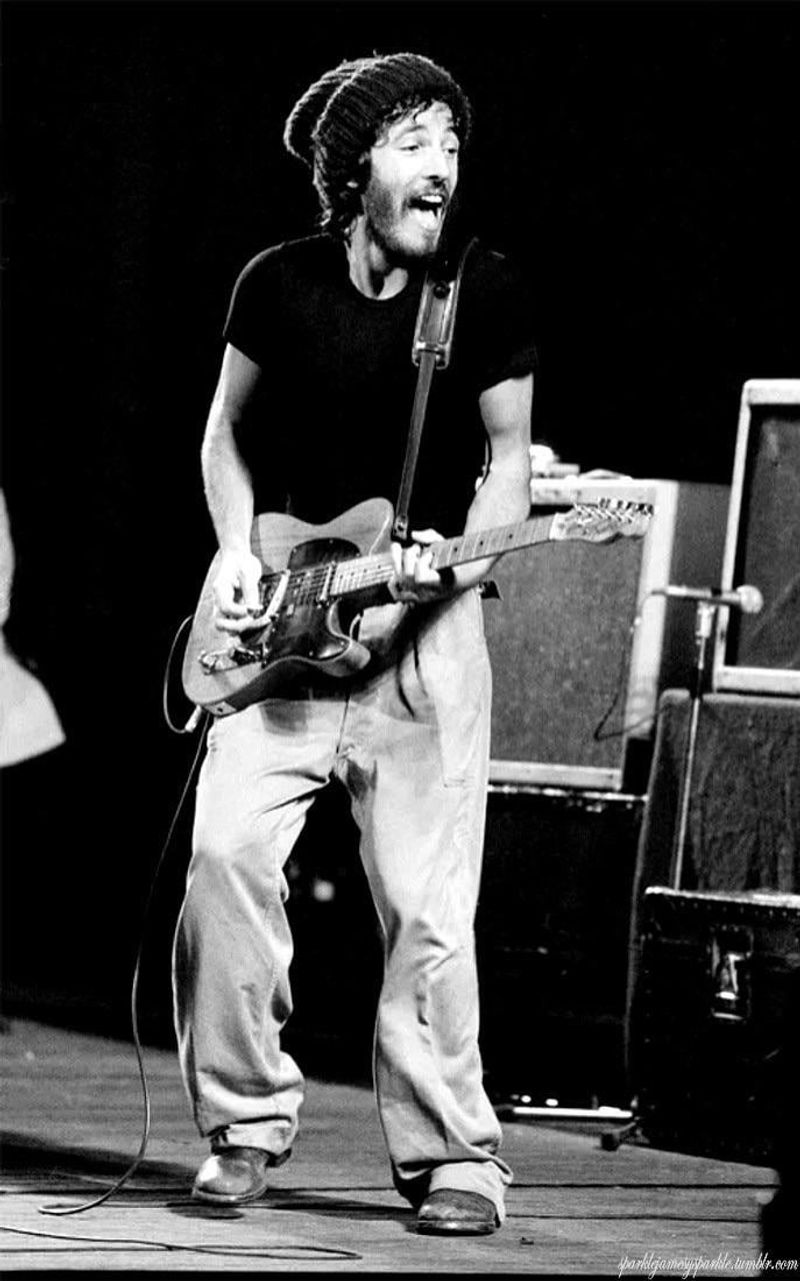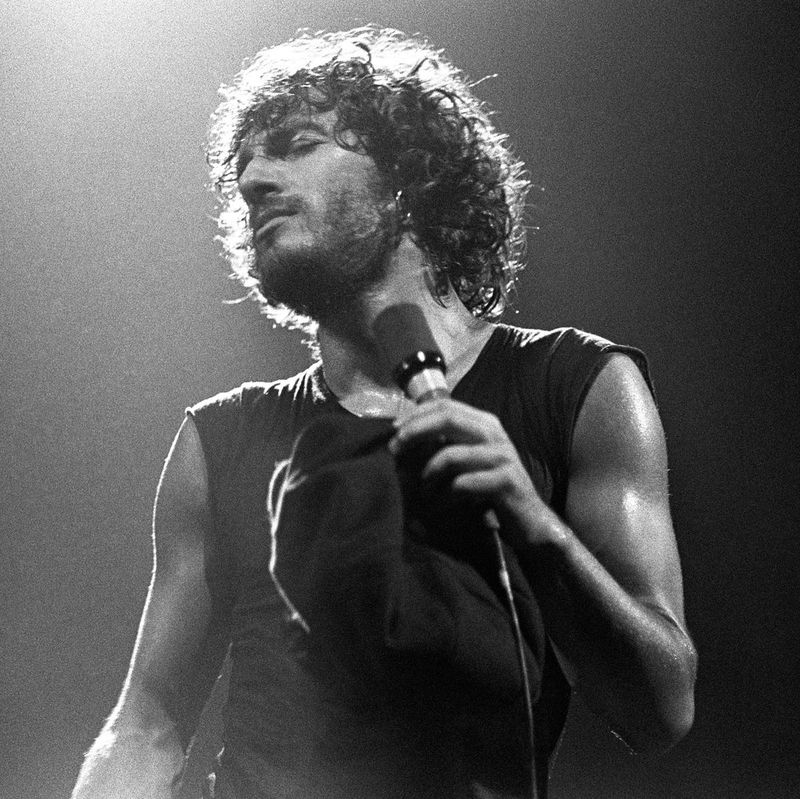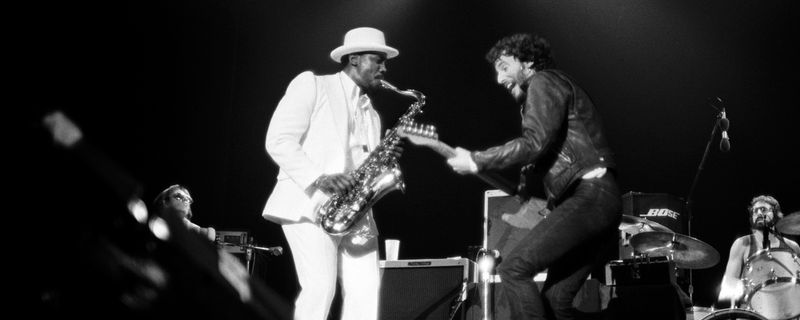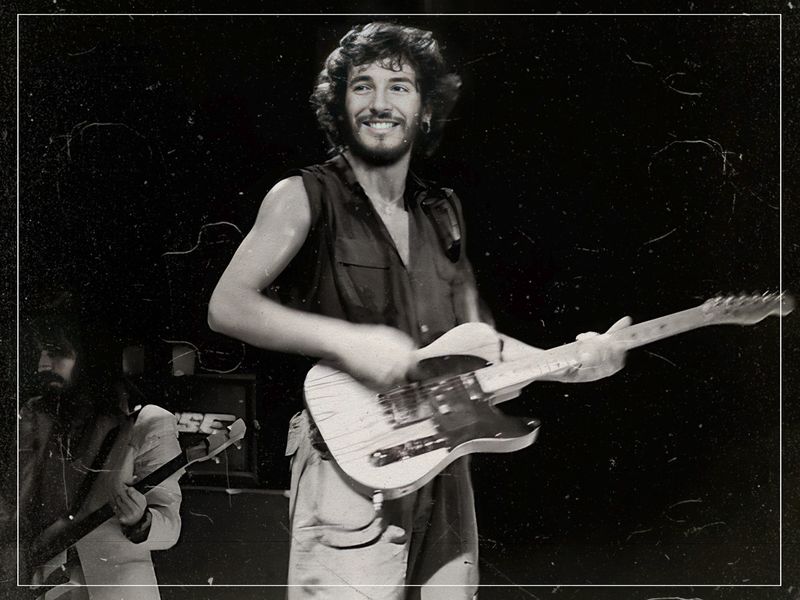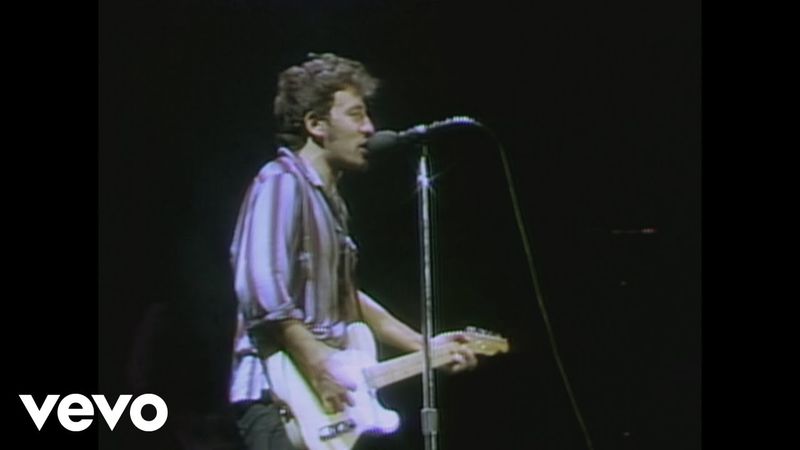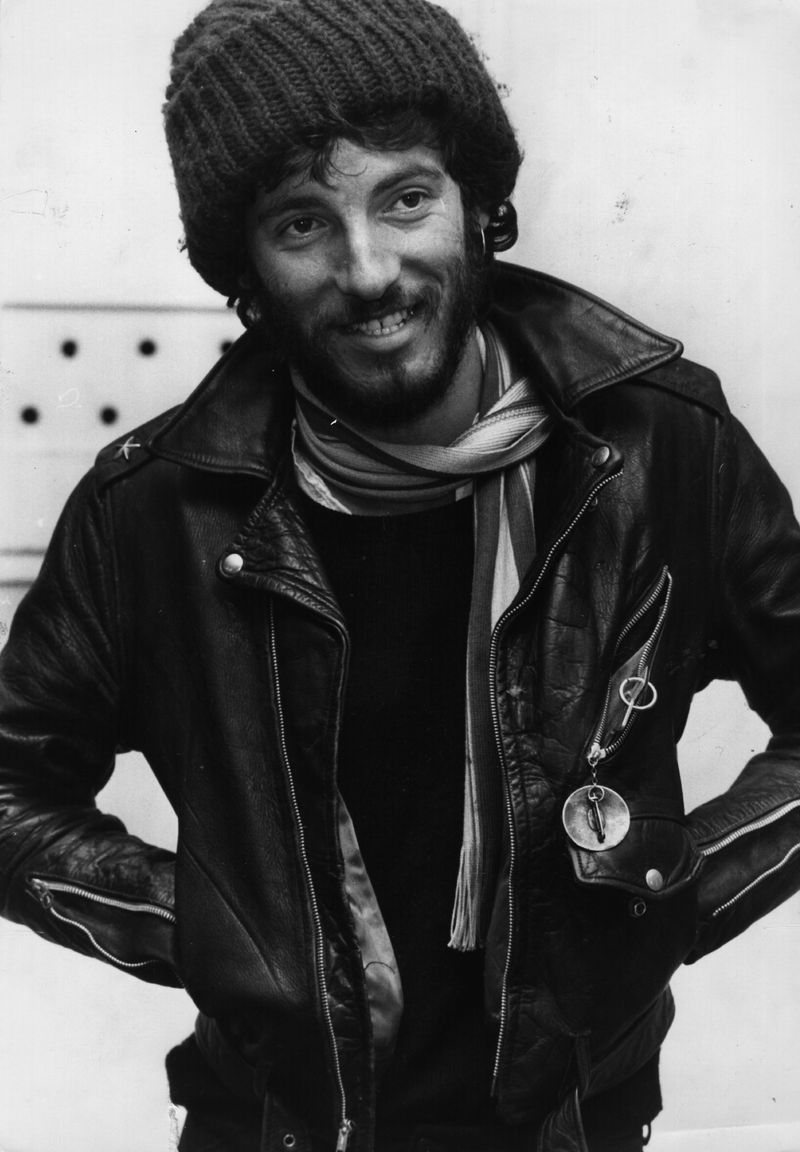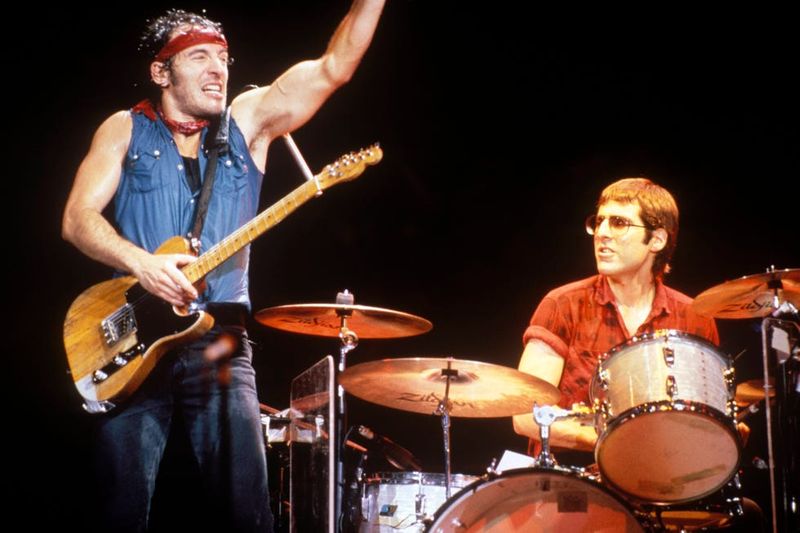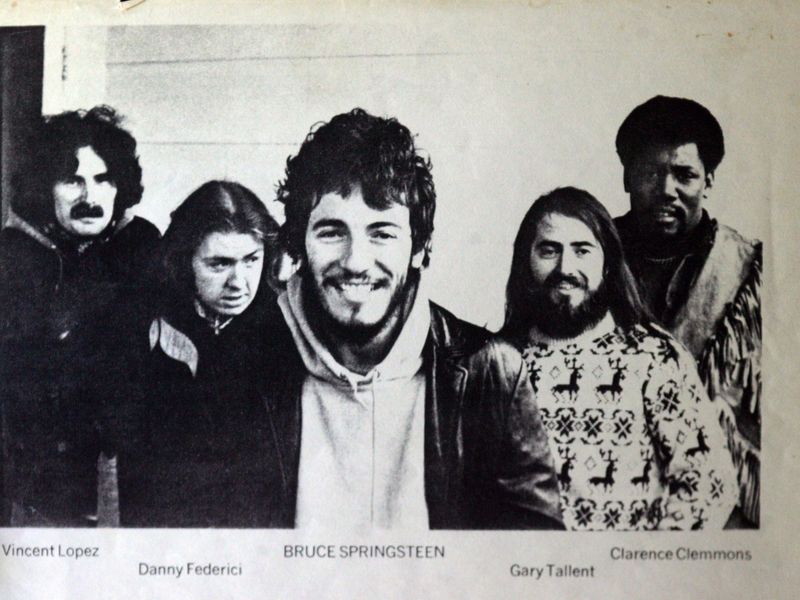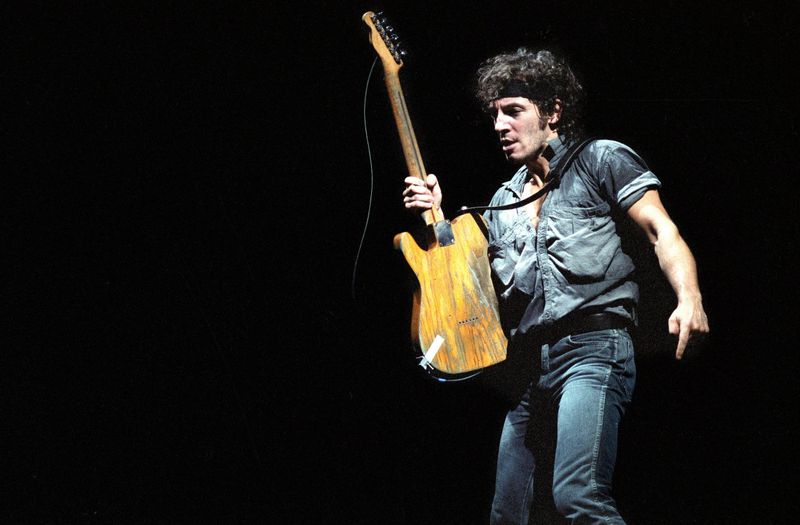Bruce Springsteen didn’t just perform in the ’70s—he dominated the decade with poetic lyrics, all-American grit, and marathon live shows that became the stuff of legend. Whether you caught him at a small club or on a national stage, The Boss delivered every time. Here are 15 reasons he was the face of rock in the 1970s.
1. “Born to Run” (1975)
“Born to Run” wasn’t just a song; it was an anthem. Released in 1975, it captured the essence of rebellion and the longing for freedom. The opening chords instantly grab you, pulling you into a world of fast cars and endless possibilities. Springsteen’s gravelly voice narrates a tale of youthful desperation and hope, resonating with anyone who’s ever dreamed of breaking free. The track’s soaring saxophone solo, courtesy of Clarence Clemons, adds an extra layer of emotional intensity. It encapsulates the spirit of rock ’n’ roll, making it timeless.
2. His Epic Live Shows
Bruce’s live shows in the ’70s were legendary marathons of music and emotion. Fans knew they were in for an unforgettable night, often lasting over three hours. Each concert was a rollercoaster of energy, with Springsteen pouring every ounce of heart and soul into his performance. The intimacy he created, even in large venues, made each person feel like part of a special moment. His connection with the audience was palpable, turning strangers into a unified force of pure joy and exhilaration.
3. The E Street Band
The E Street Band was more than just Bruce’s backing group; they were his musical family. Each member brought their unique flair, creating a synergy that was electric. From Clarence Clemons’ commanding saxophone to Steven Van Zandt’s soulful guitar riffs, the chemistry was undeniable. Their collective talent transformed Springsteen’s songs into live masterpieces. The band became an integral part of his identity, enhancing his storytelling through their dynamic performances. Together, they crafted a sound that was both raw and polished, echoing with authenticity and passion.
4. “Darkness on the Edge of Town” (1978)
“Darkness on the Edge of Town” marked a pivotal moment in Springsteen’s career. Released in 1978, it showcased a more mature and introspective side of The Boss. The album delves into themes of loss, longing, and resilience, painting vivid portraits of American life. Each track weaves together stories of broken dreams and enduring hope. The raw, stripped-back sound highlights Springsteen’s lyrical prowess and emotional depth. This album solidified his reputation as a storyteller capable of capturing the complexities of the human experience.
5. His Working-Class Lyrics
Springsteen’s lyrics spoke to the heart of the American working class. With poetic precision, he painted portraits of everyday struggles, dreams, and triumphs. His songs resonated with those who felt unseen, offering them a voice and a sense of belonging. The authenticity in his narratives, drawn from personal experiences and observations, made his music relatable and poignant. Whether singing about factory workers or lovers on the run, his words captured the raw essence of life’s highs and lows, embedding them in the fabric of rock history.
6. The ’75 Hammersmith Odeon Show
The 1975 Hammersmith Odeon show is often hailed as one of Springsteen’s defining moments. It was his first major performance outside the U.S., introducing Europe to his unparalleled energy and charisma. The concert was a whirlwind of emotion, with Bruce delivering every song with palpable intensity. Fans were left breathless, witnessing what many consider a rock ’n’ roll baptism. This legendary show solidified his international reputation, proving that his appeal transcended borders. The raw power and passion of that night echoed through the years, becoming a benchmark for live performances.
7. That Signature Look
Bruce’s style in the ’70s was iconic, blending everyman appeal with rockstar edge. He made denim and leather synonymous with authenticity and rebellion. His look was as much a part of his identity as his music, resonating with fans who saw themselves reflected in his rugged, approachable persona. Springsteen’s sweat-soaked shirts and unkempt hair became a symbol of raw, unfiltered energy. His style was a visual extension of his music—real, unpretentious, and full of grit, embodying the spirit of rock ’n’ roll’s golden age.
8. “Rosalita (Come Out Tonight)”
“Rosalita (Come Out Tonight)” was a joyous explosion of sound and emotion. Known for its exhilarating live performances, the song became a fan favorite. Springsteen’s playful lyrics and infectious energy made it a staple in his concerts. The extended jam sessions, often lasting over 10 minutes, showcased the band’s chemistry and versatility. Fans couldn’t help but dance and sing along, caught up in the infectious spirit. The song encapsulated the sense of freedom and youthful exuberance that defined Bruce’s early career, making it timelessly memorable.
9. He Kept It Real
In an era where many artists chased trends, Bruce stayed true to his roots. He didn’t succumb to the lure of disco or glam; instead, he nurtured his rock and soul foundations. Springsteen’s authenticity resonated with fans who appreciated his refusal to compromise. His dedication to his craft and his unwavering commitment to storytelling set him apart. Bruce’s grounded nature, both on and off stage, fostered a deep connection with his audience, reinforcing his status as The Boss of rock music.
10. “Thunder Road”
“Thunder Road” is often hailed as one of the greatest opening tracks in rock history. It begins with a harmonica and piano, setting a scene of promise and change. Springsteen’s evocative lyrics paint a picture of escape and hope, resonating with dreamers everywhere. The song builds to a crescendo, capturing the urgency of youth and the desire for a better future. Its storytelling brilliance and emotional depth make it a timeless classic, embodying the essence of Springsteen’s artistry and the spirit of rock.
11. His Rebellious Spirit
Springsteen’s rebellious spirit was a defining trait throughout the ’70s. He fought for creative control, refusing to bow to industry pressures. This tenacity ensured his music remained authentic and true to his vision. Bruce’s battles with record labels became legendary, showcasing his determination to protect his artistry. His independence inspired countless fans and musicians, highlighting the importance of staying true to oneself. Springsteen’s defiance wasn’t just about music—it was a statement about integrity and the power of standing one’s ground.
12. Max Weinberg’s Drumming
Max Weinberg’s drumming was the heartbeat of Springsteen’s music. His powerful, precise style added intensity to every live show and studio recording. Max’s dynamic energy and rhythmic prowess elevated the E Street Band’s sound, driving the beat with unwavering passion. His commitment to perfection and his ability to adapt to Springsteen’s ever-changing setlists made him an invaluable asset. Fans were mesmerized by his thunderous performances, which complemented Bruce’s storytelling with rhythmic finesse. Weinberg’s contribution to the band’s success cannot be overstated.
13. “The Wild, the Innocent & the E Street Shuffle” (1973)
“The Wild, the Innocent & the E Street Shuffle” was a bold statement of Springsteen’s artistic vision. Released in 1973, the album mixed rock, jazz, and soul influences, creating a vibrant, streetwise sound. Each song was a colorful tapestry of characters and stories, capturing the essence of urban life. The album showcased Bruce’s evolving songwriting, with tracks that were both playful and introspective. It was a glimpse into his future greatness, highlighting his ability to blend diverse influences into a cohesive, captivating narrative.
14. Devoted Fans
Springsteen’s fans weren’t just admirers—they were disciples. From New Jersey to Nebraska, they followed him with unwavering loyalty. His music spoke to them, creating a bond that transcended typical fan-artist relationships. Concerts felt like communal gatherings, where fans sang every lyric and shared in the collective joy. Bruce’s genuine appreciation for his audience deepened this connection, making each person feel valued. The fervor and dedication of his fanbase became legendary, highlighting the profound impact of his music and persona.
15. He Made the American Dream Sound Real
Springsteen’s music made the American Dream resonate with authenticity. He painted it not as a glossy fantasy, but as a raw, attainable reality. Through vivid storytelling, he captured the struggles and triumphs of ordinary people, making their dreams and aspirations come alive. His songs reflected the diverse faces of America, offering hope and inspiration. By staying true to his roots and experiences, Bruce provided a soundtrack for those seeking something better, transforming the abstract concept of the American Dream into a tangible, relatable narrative.
